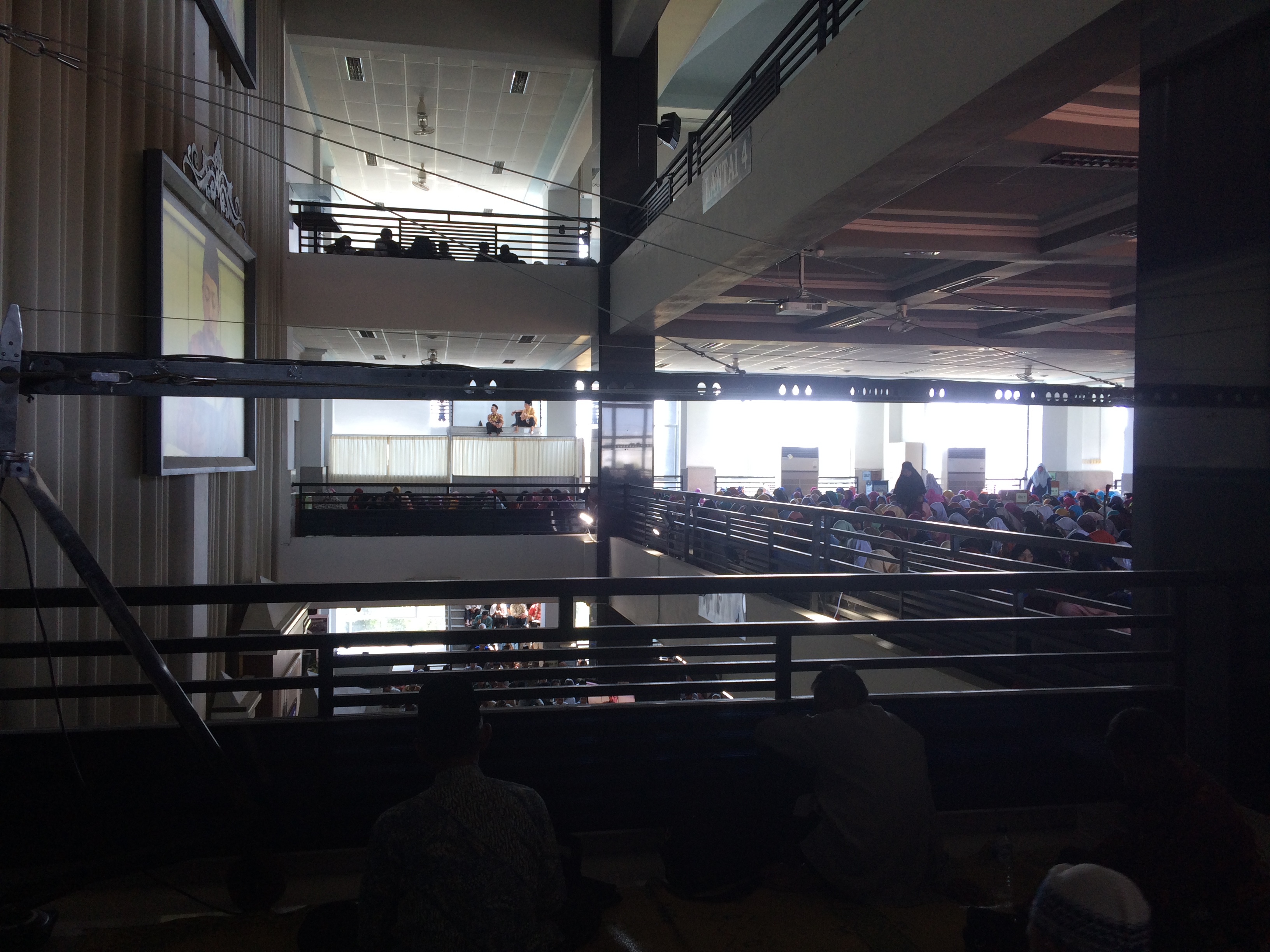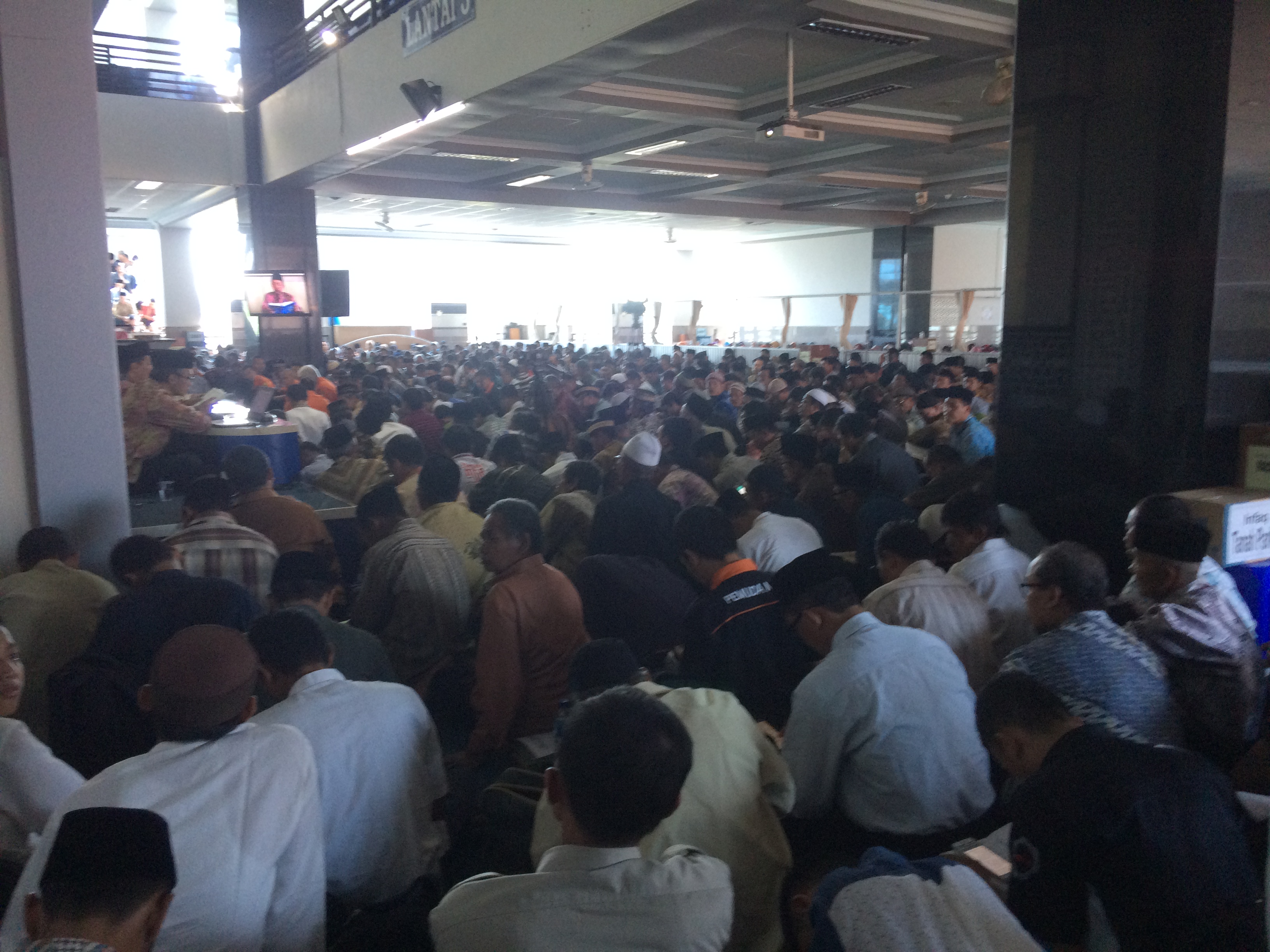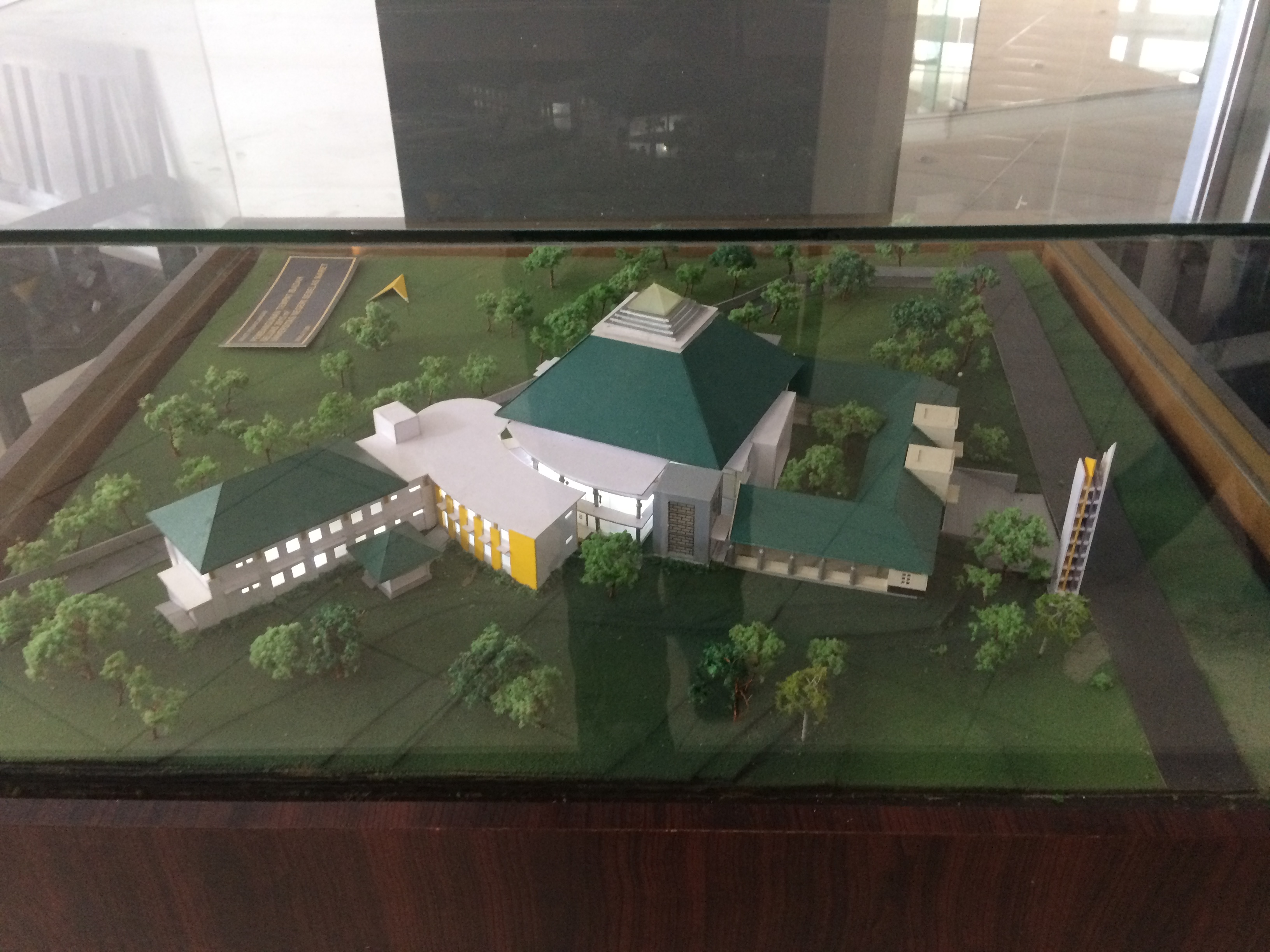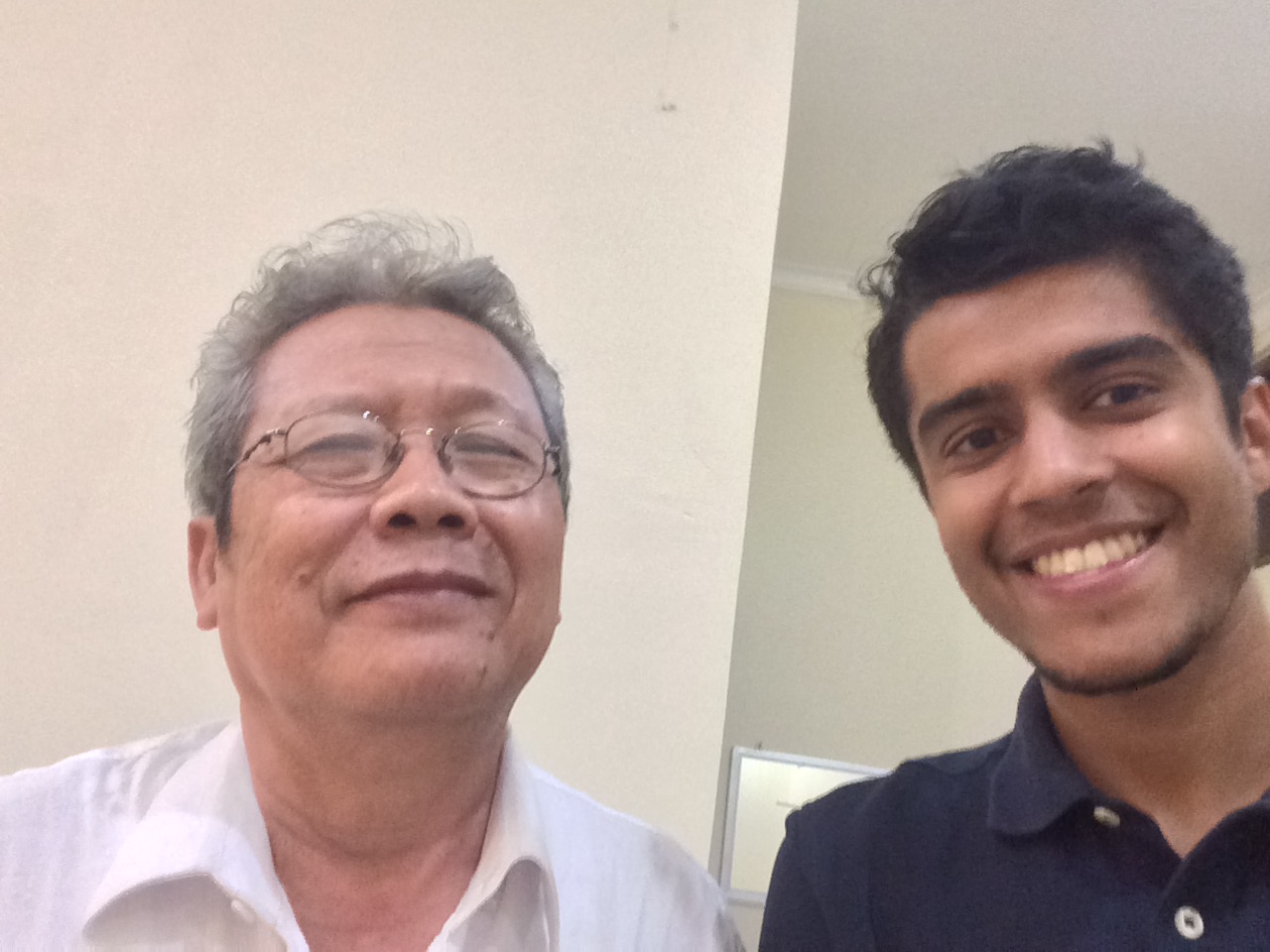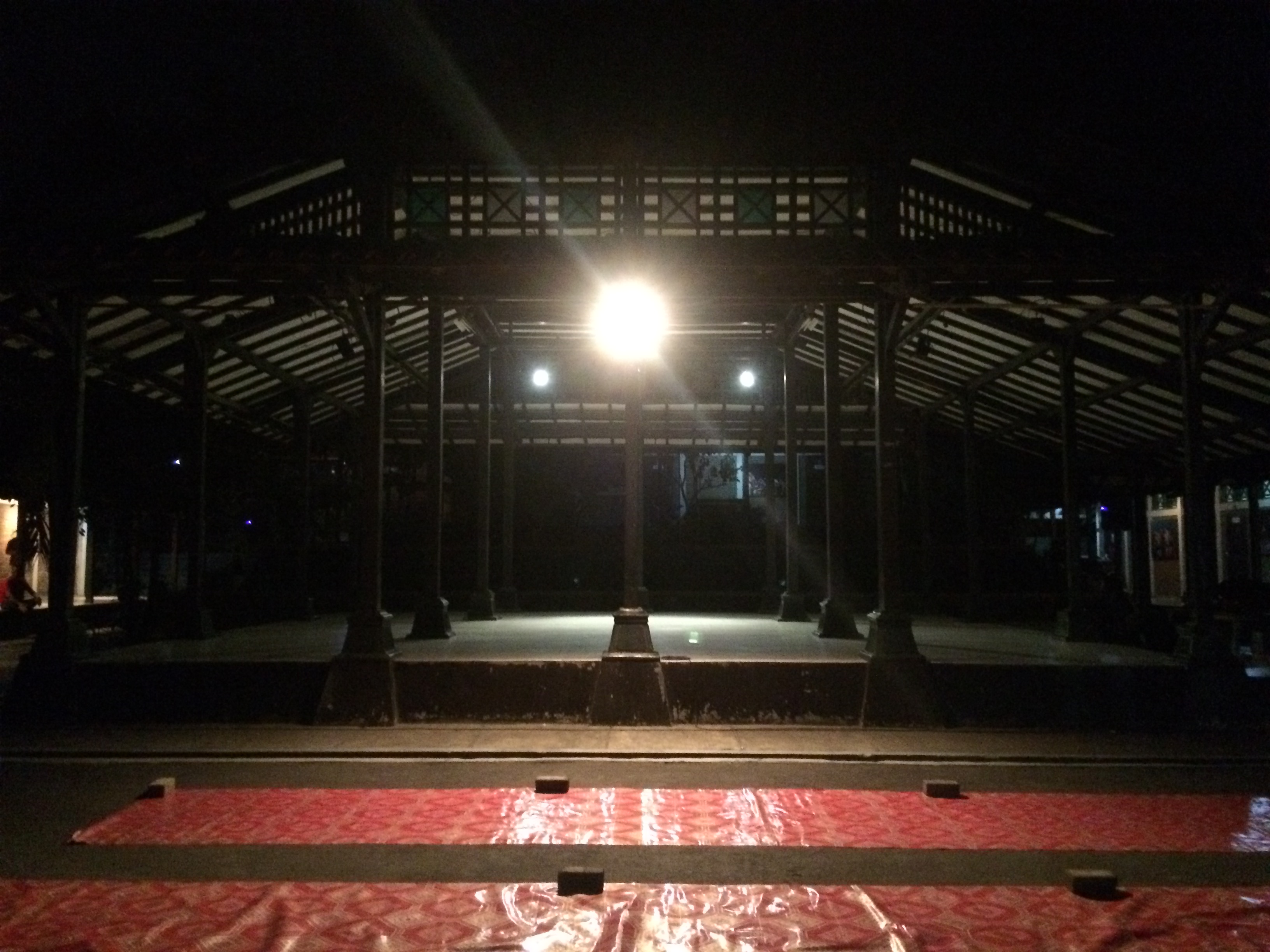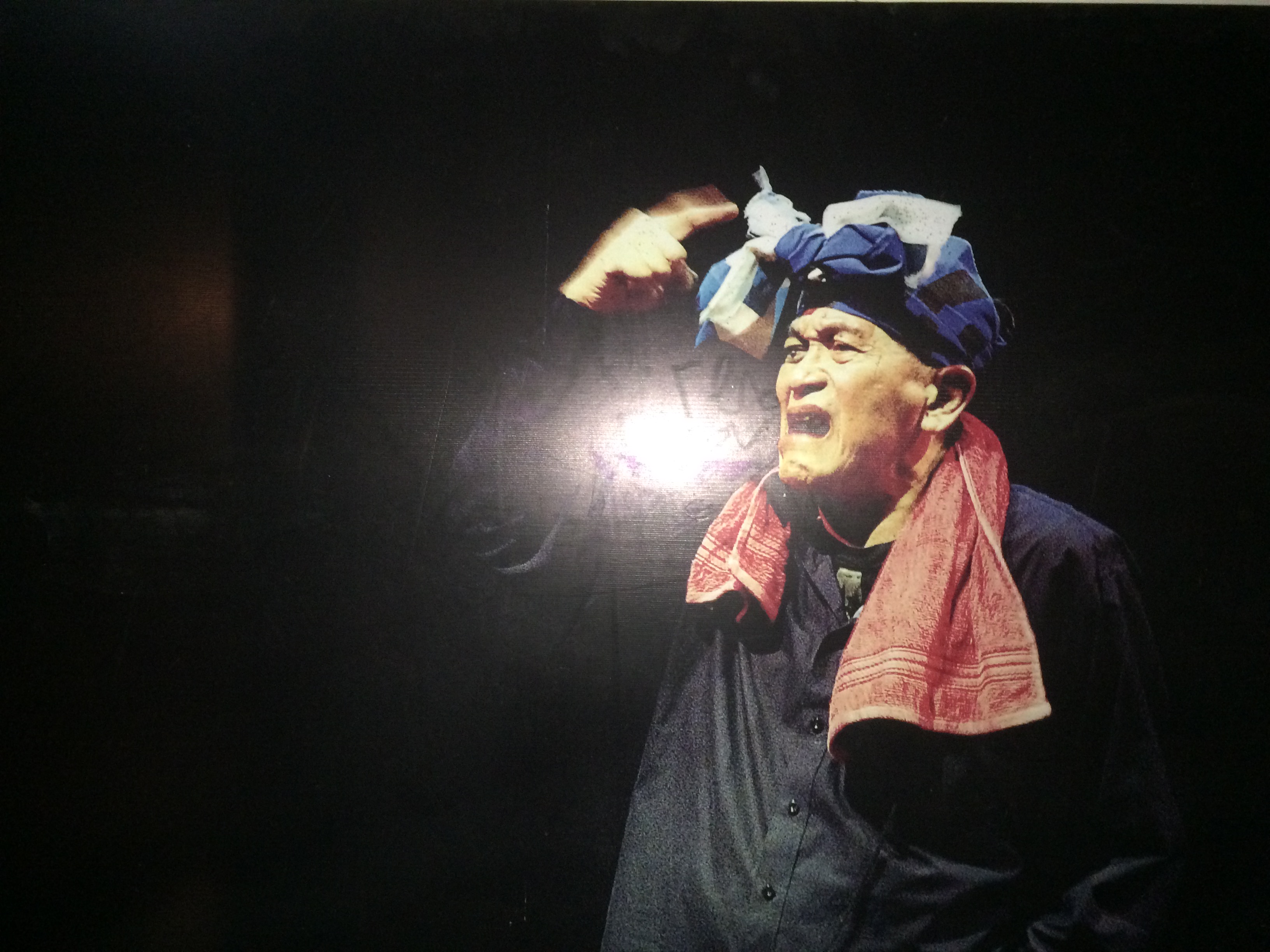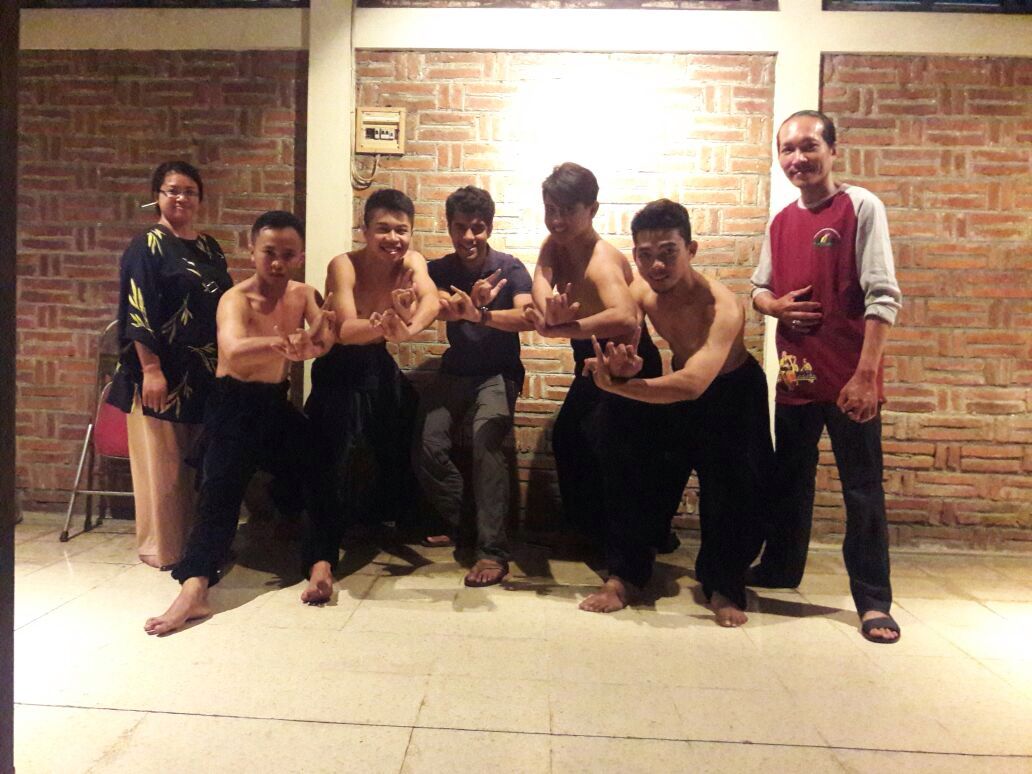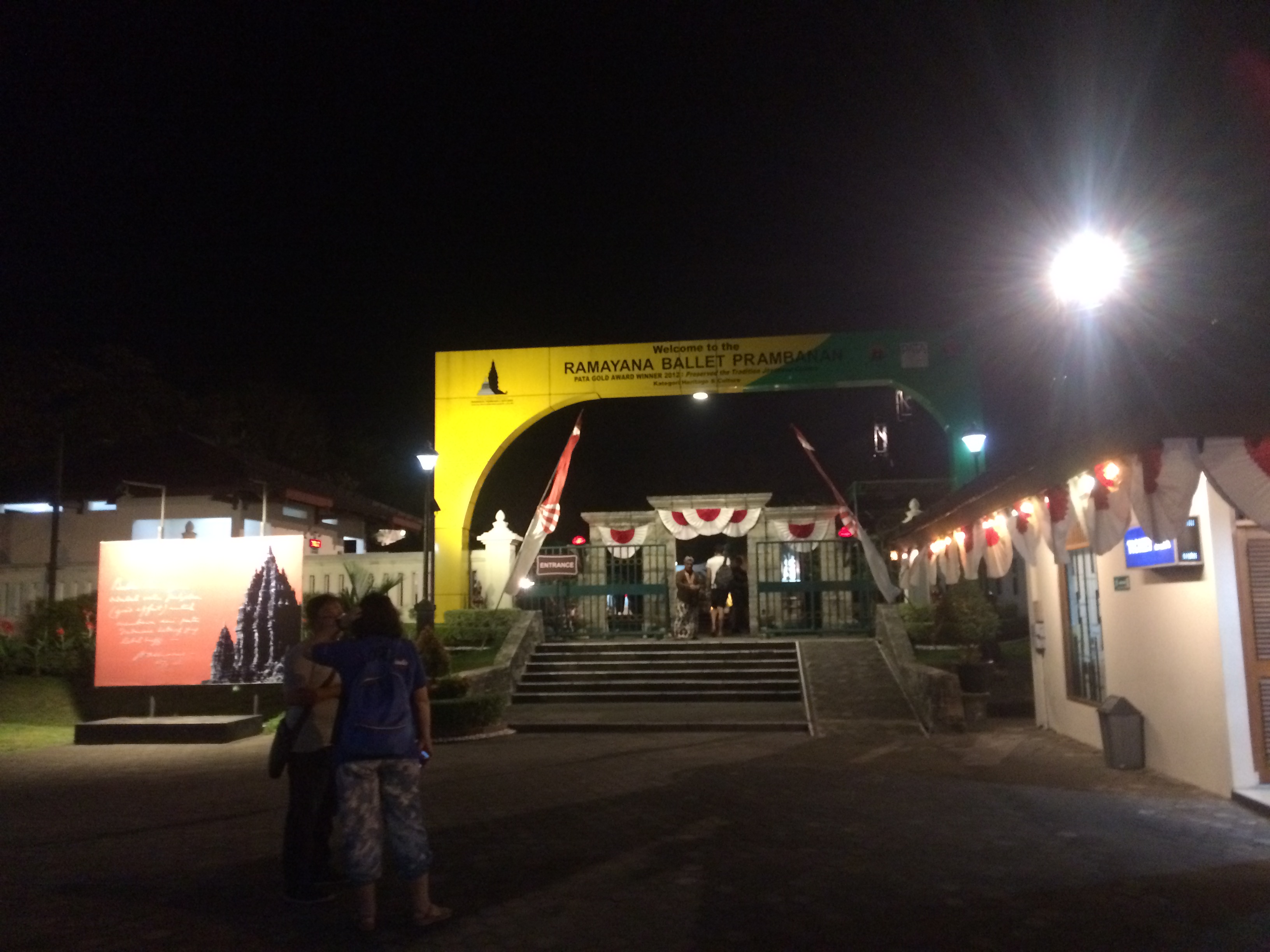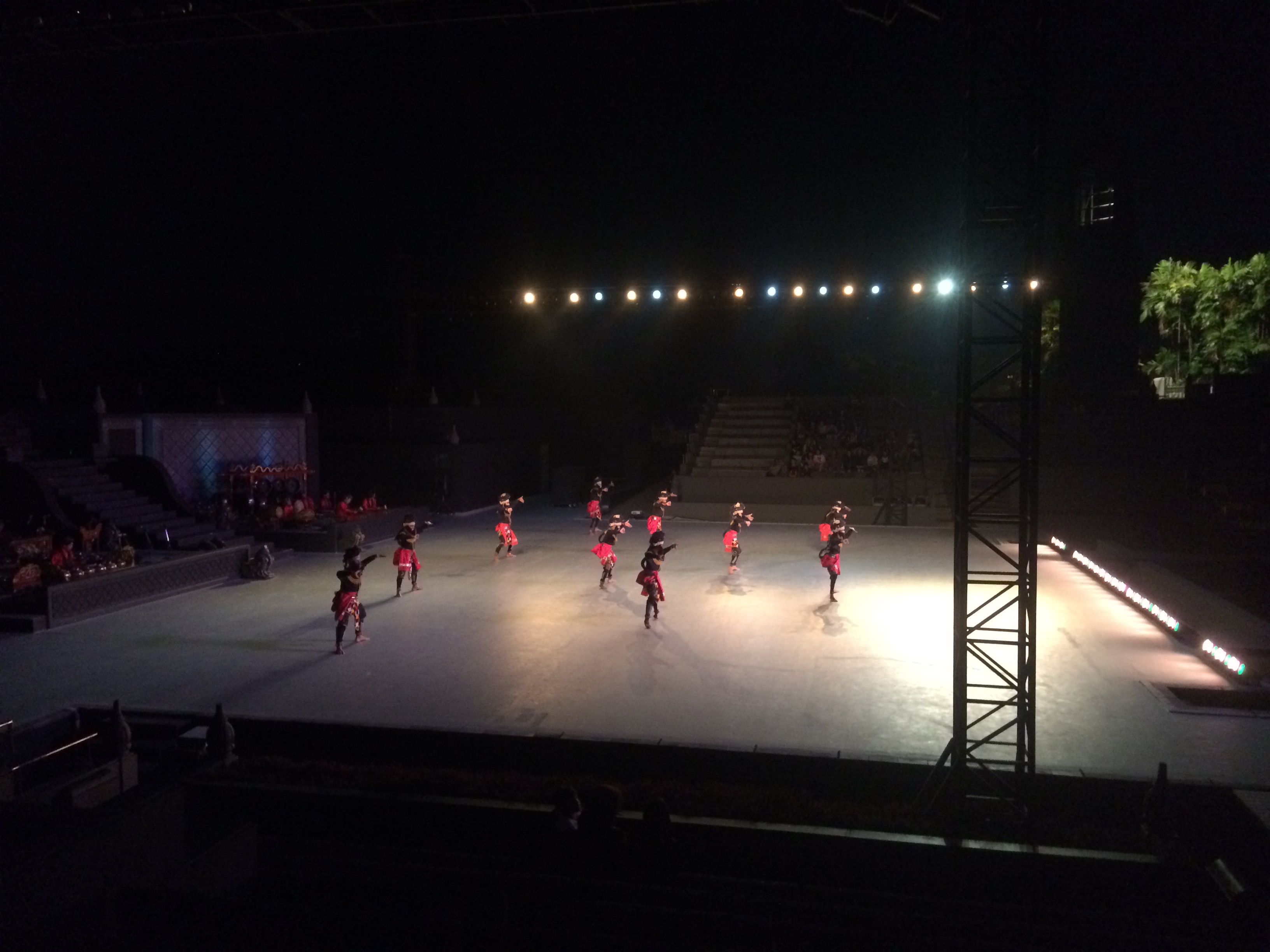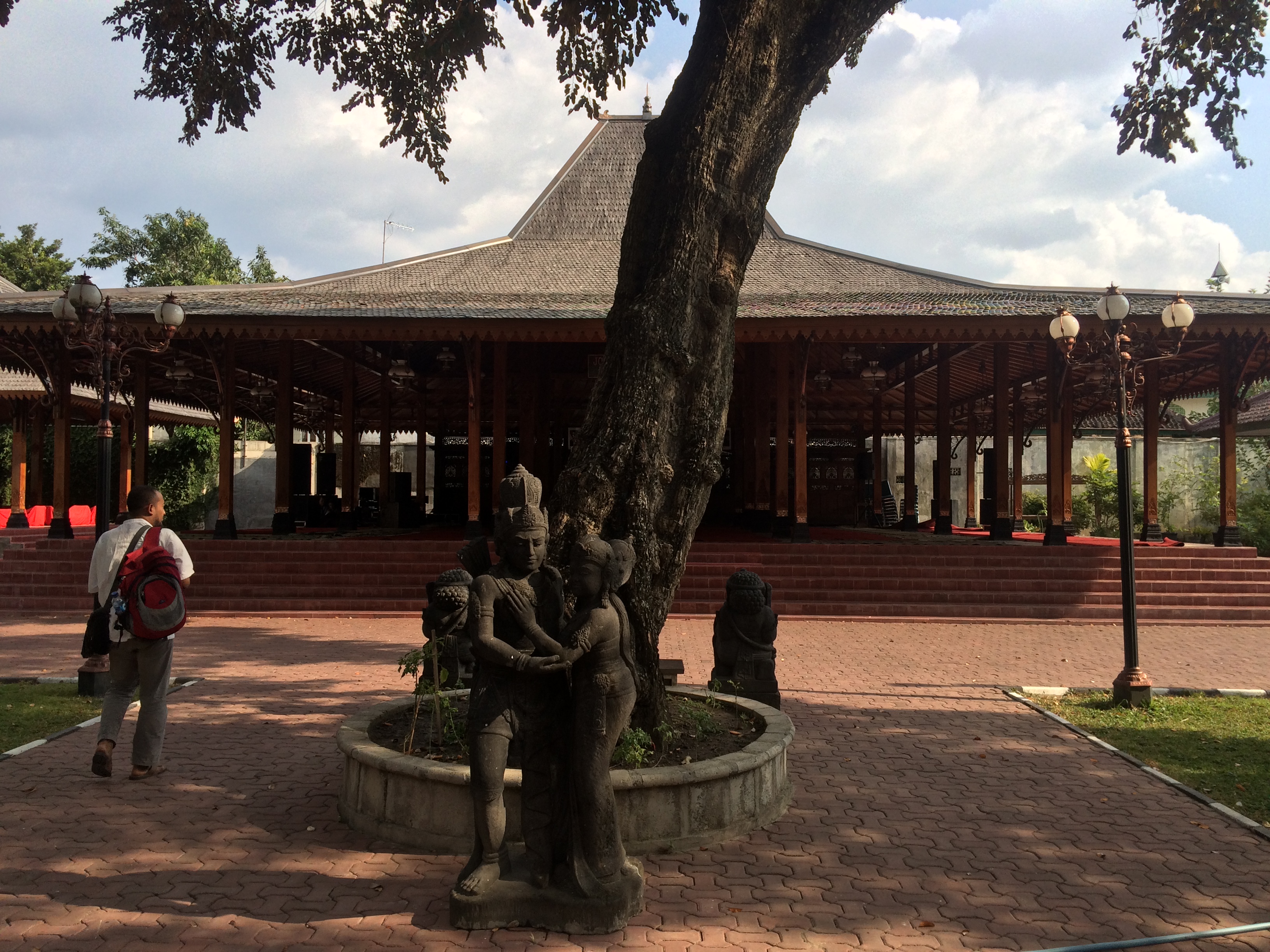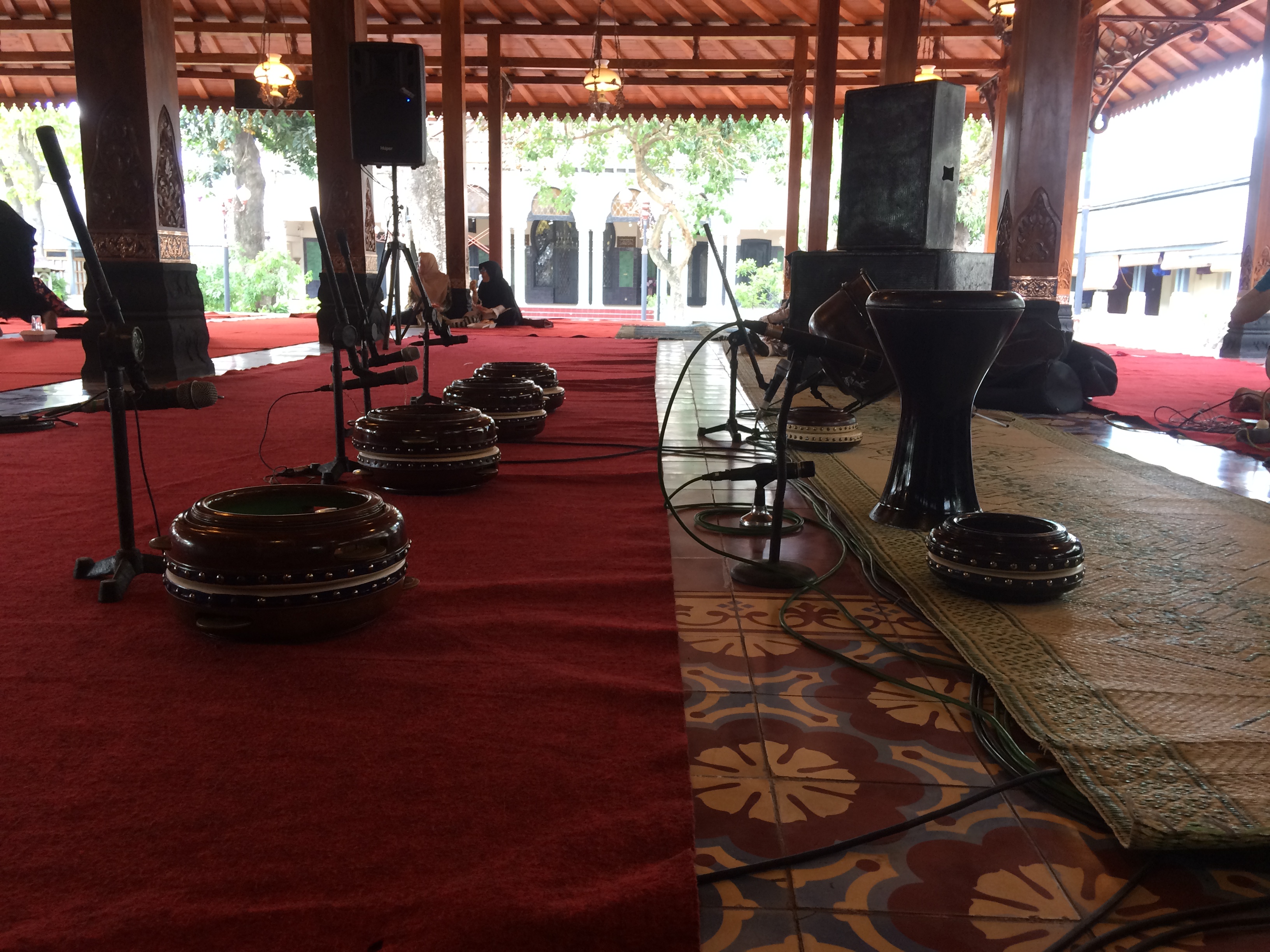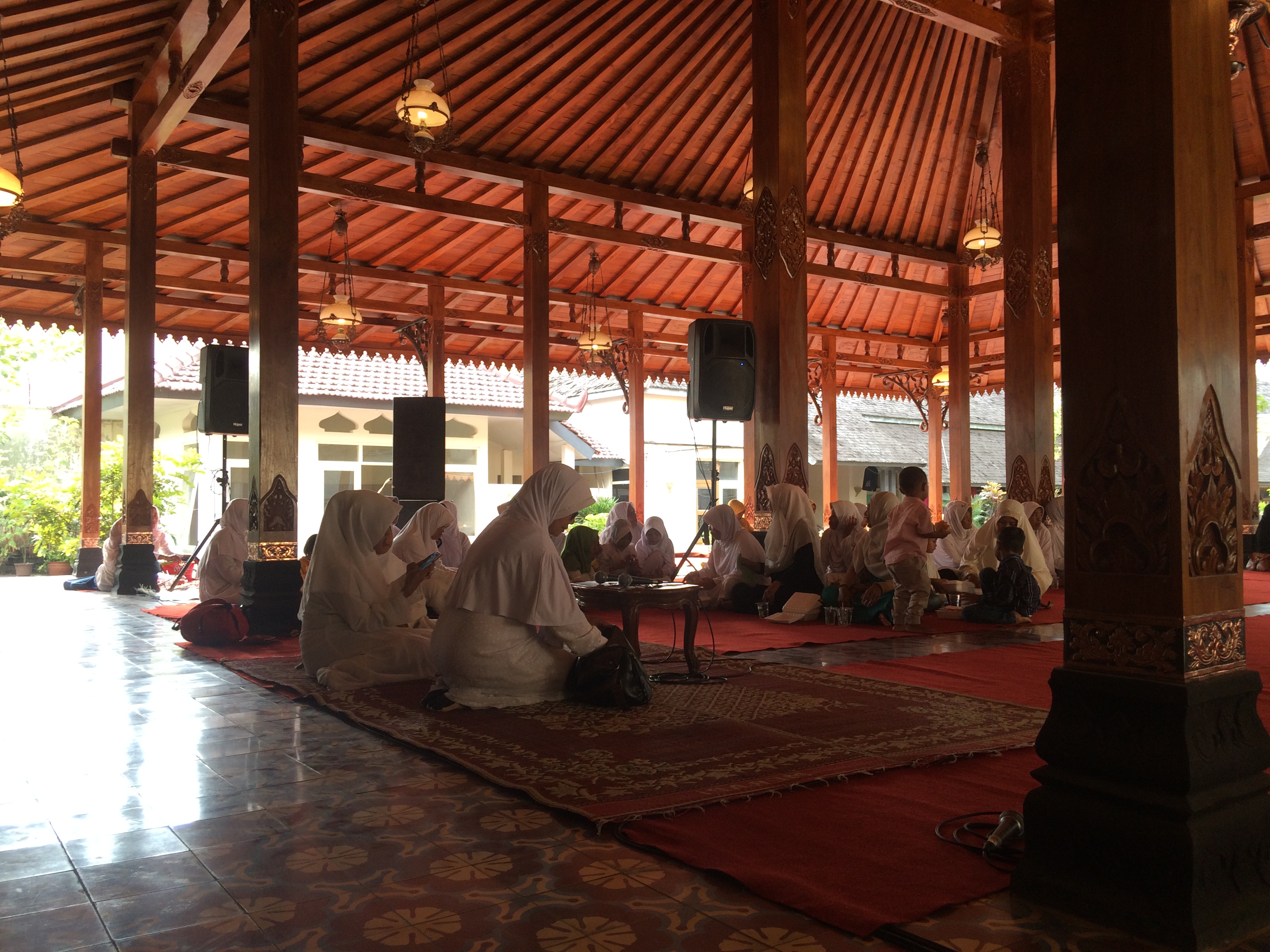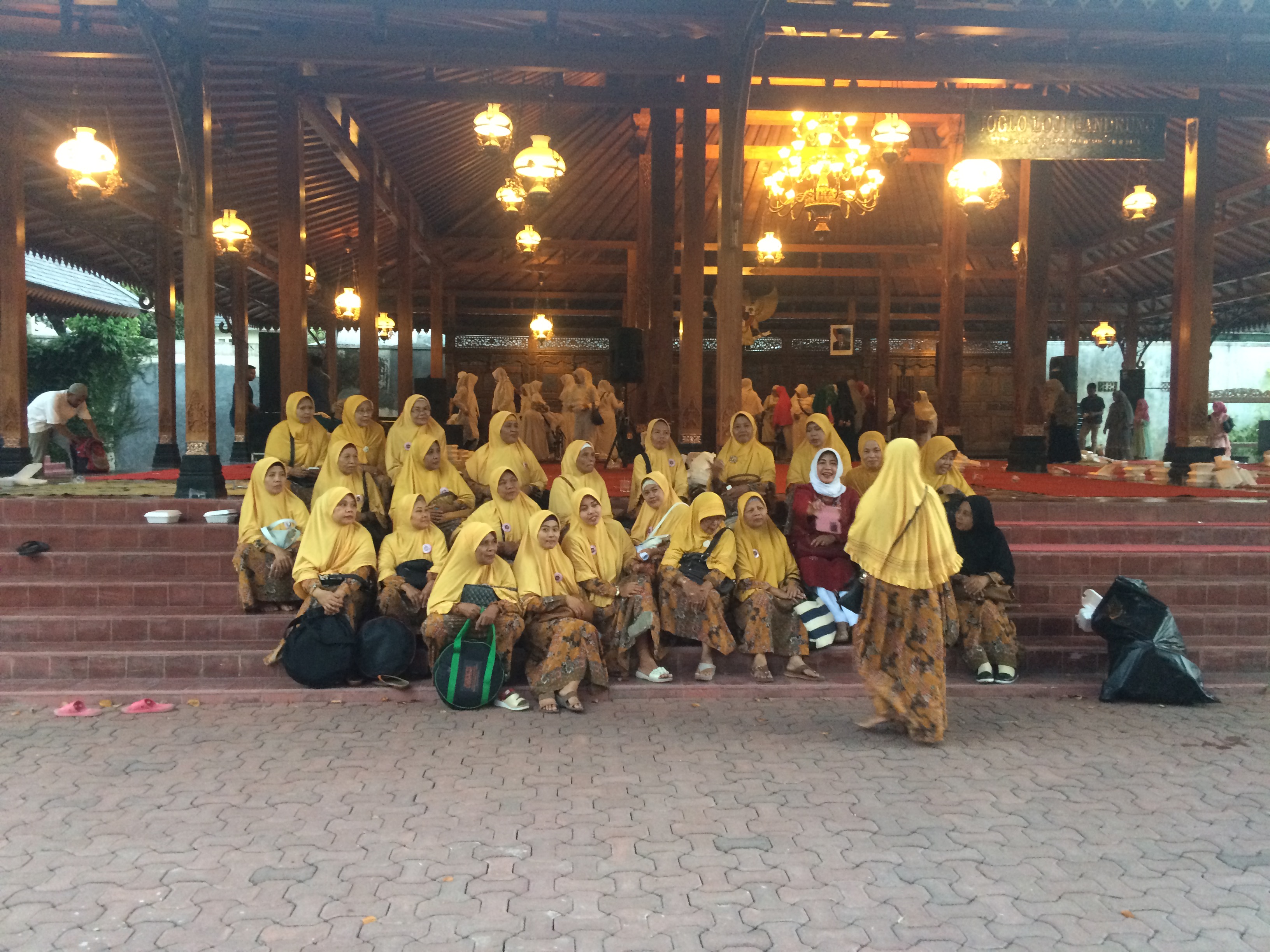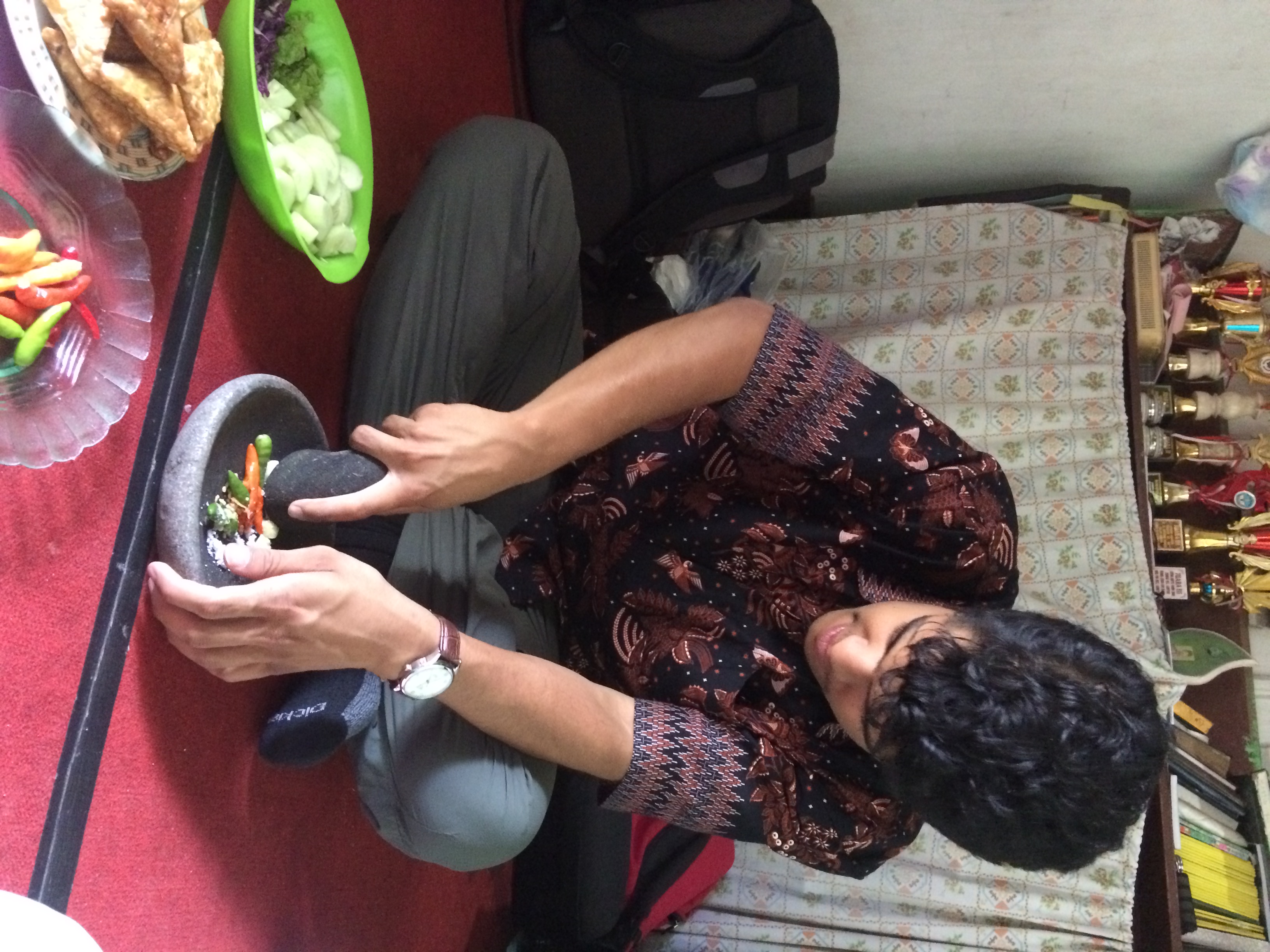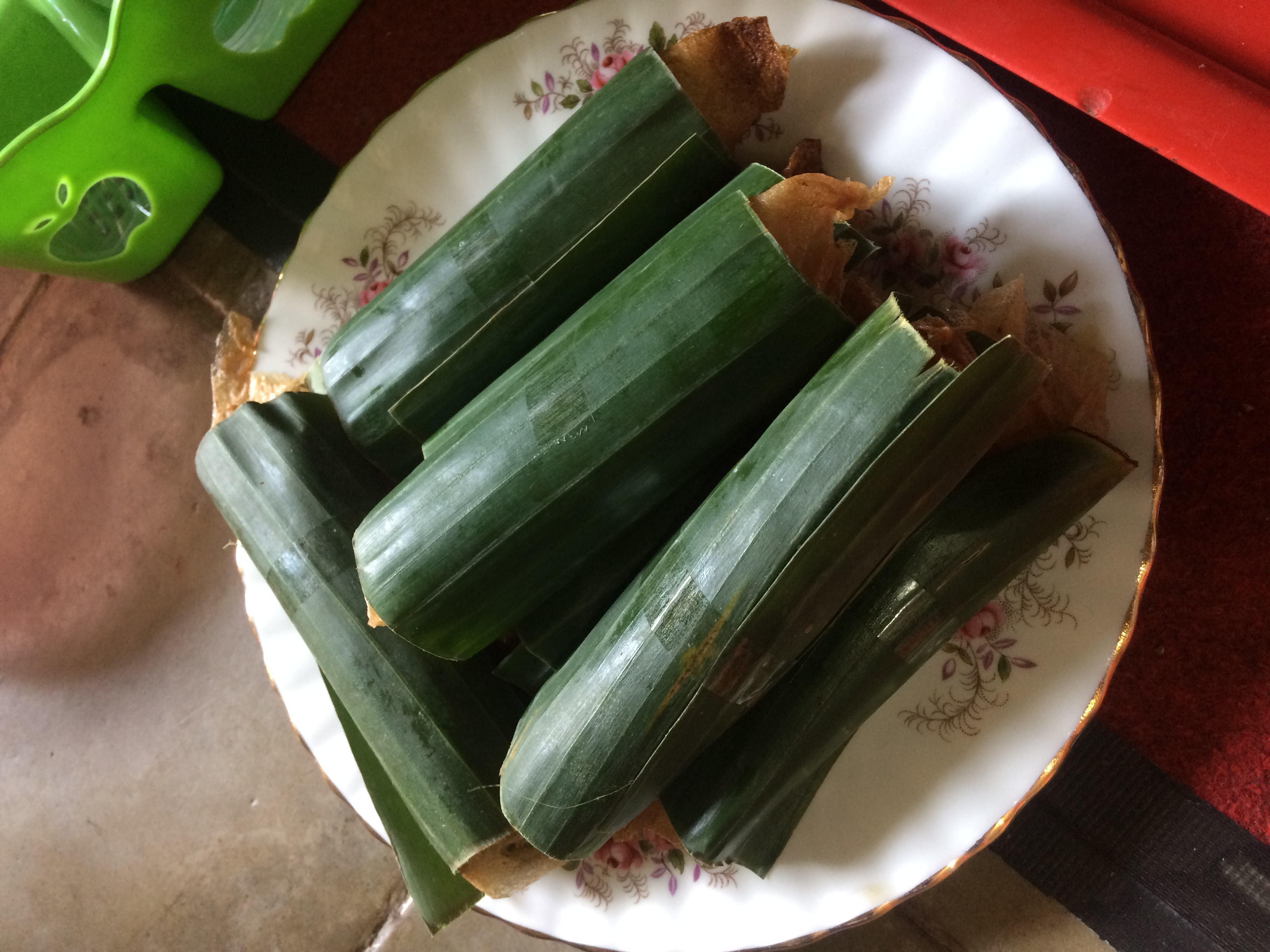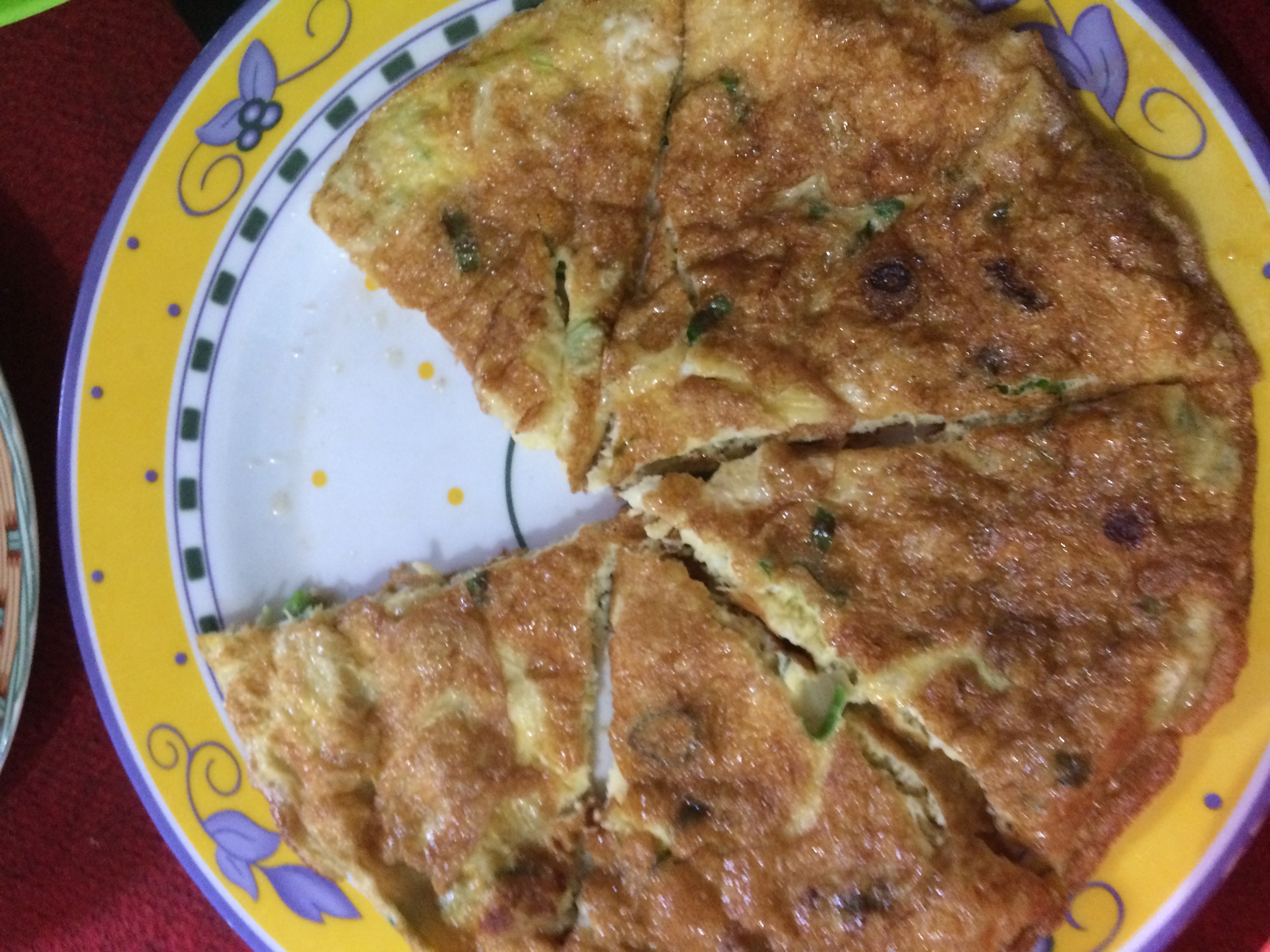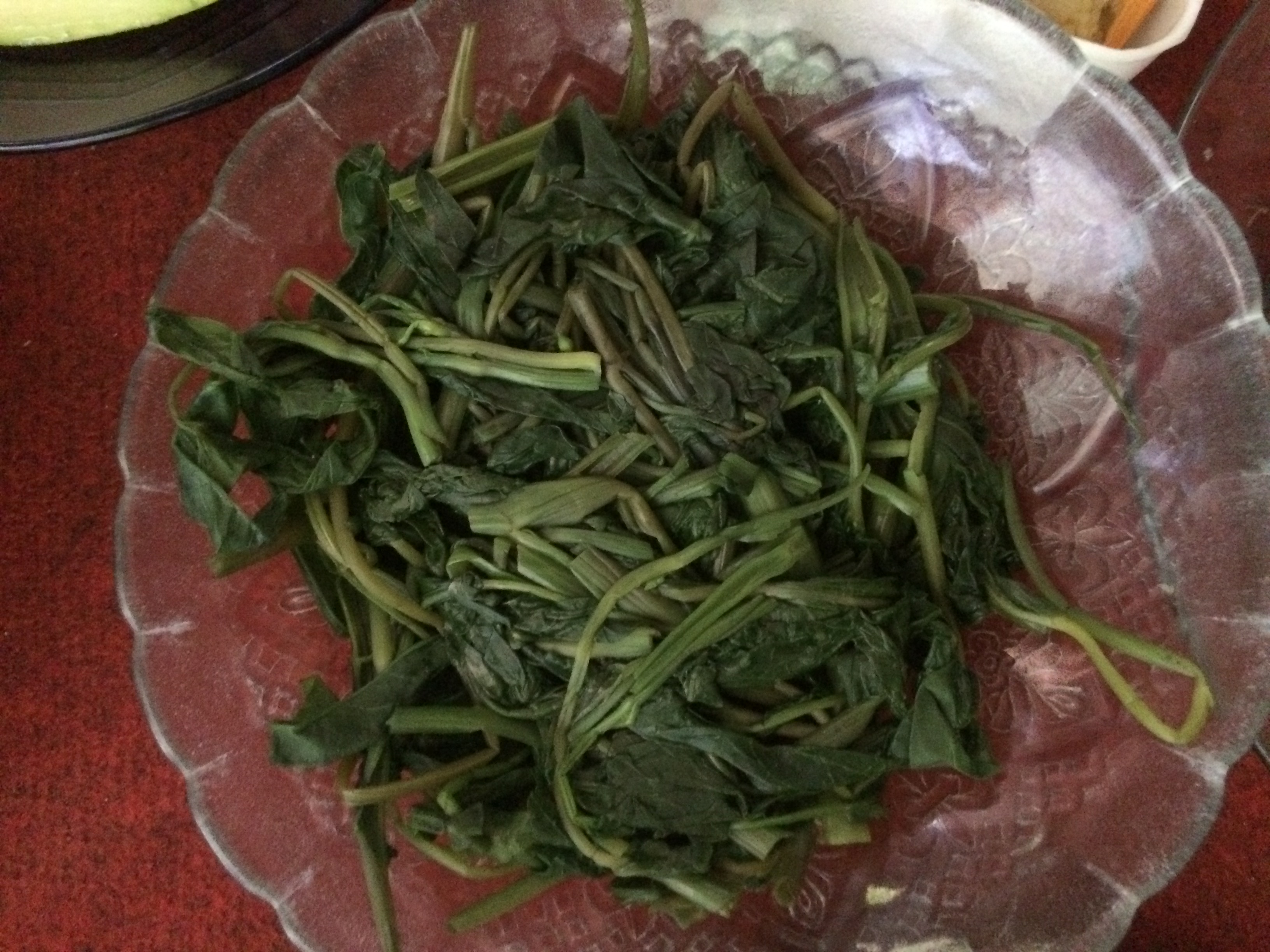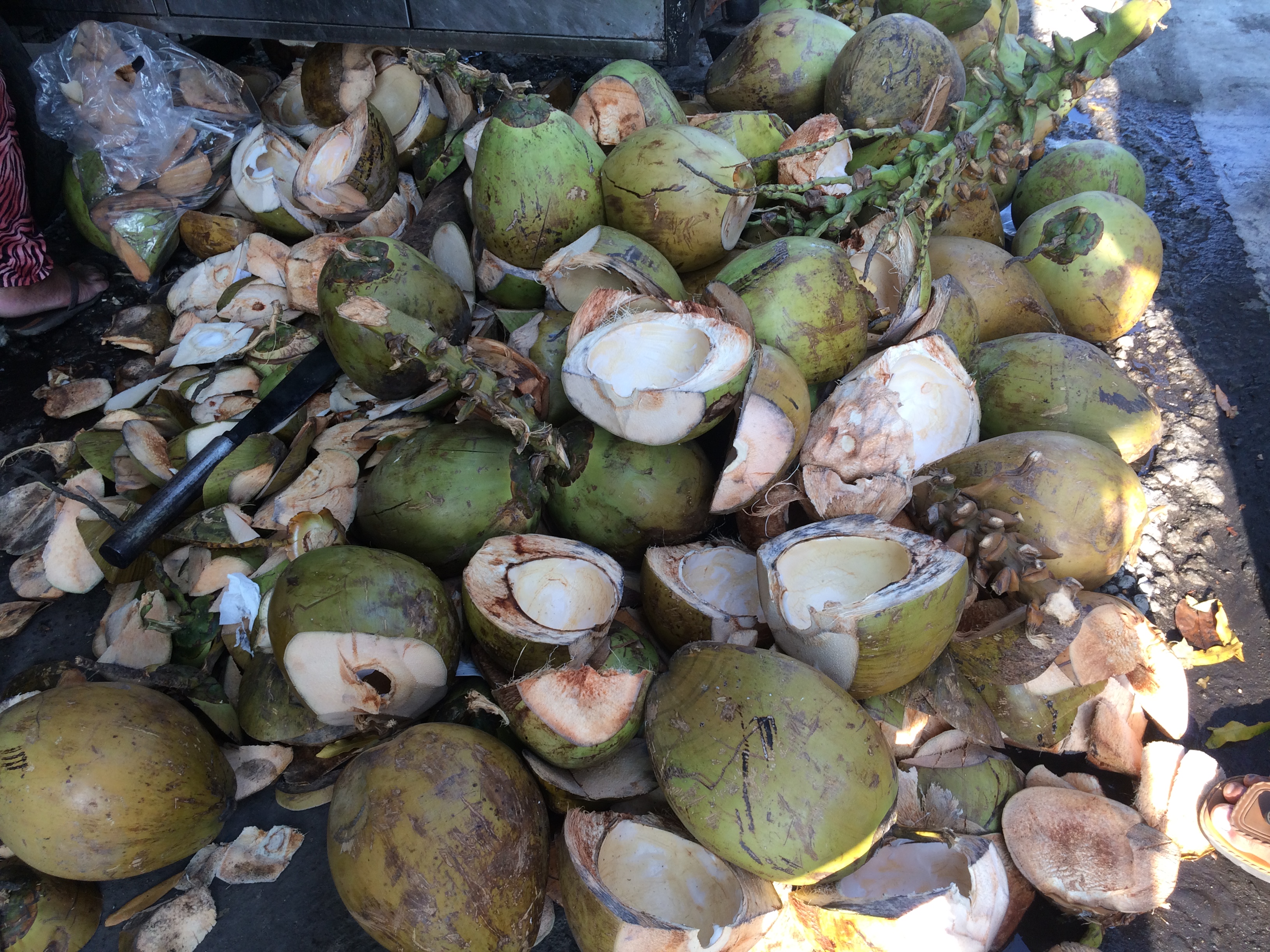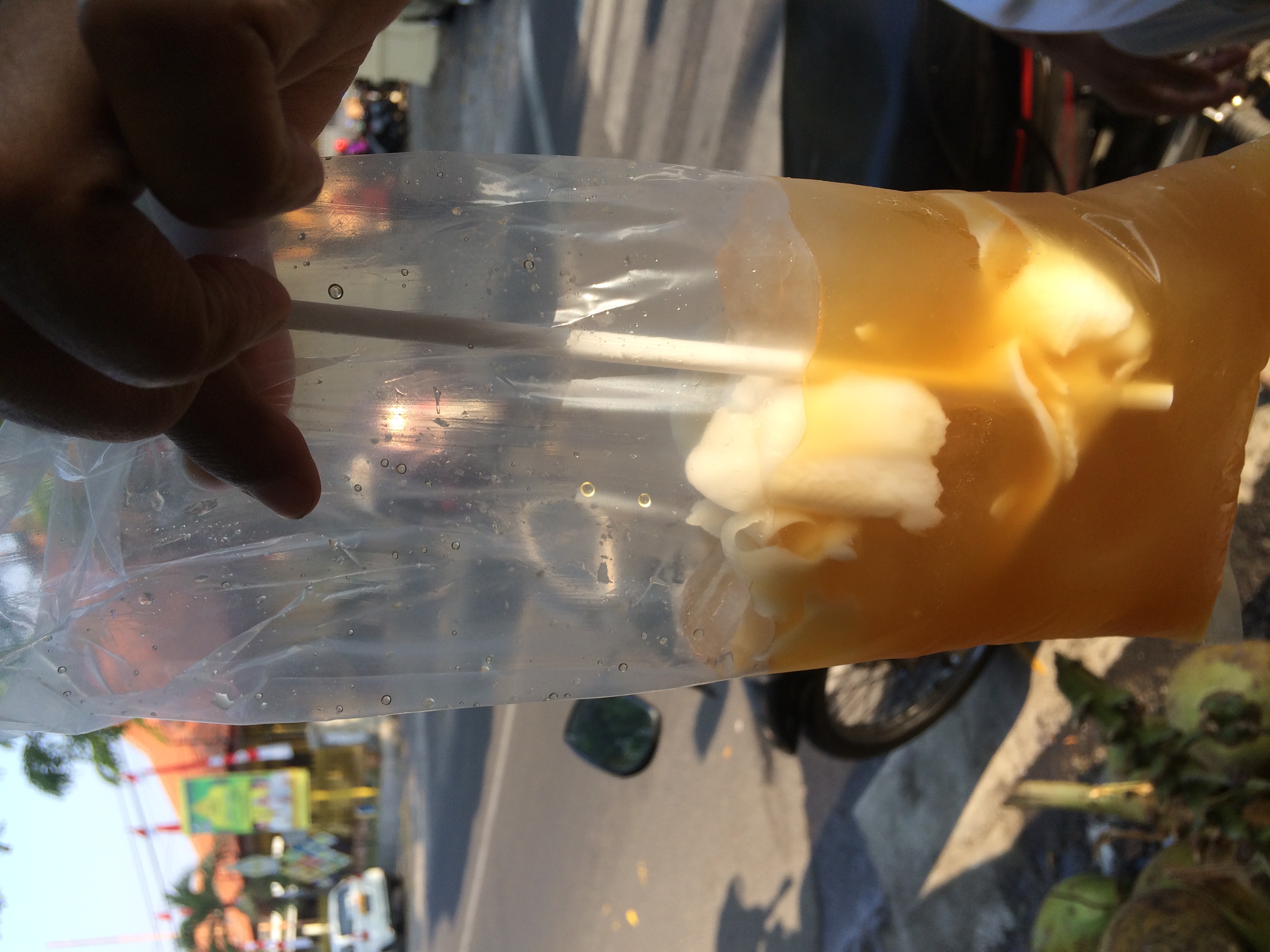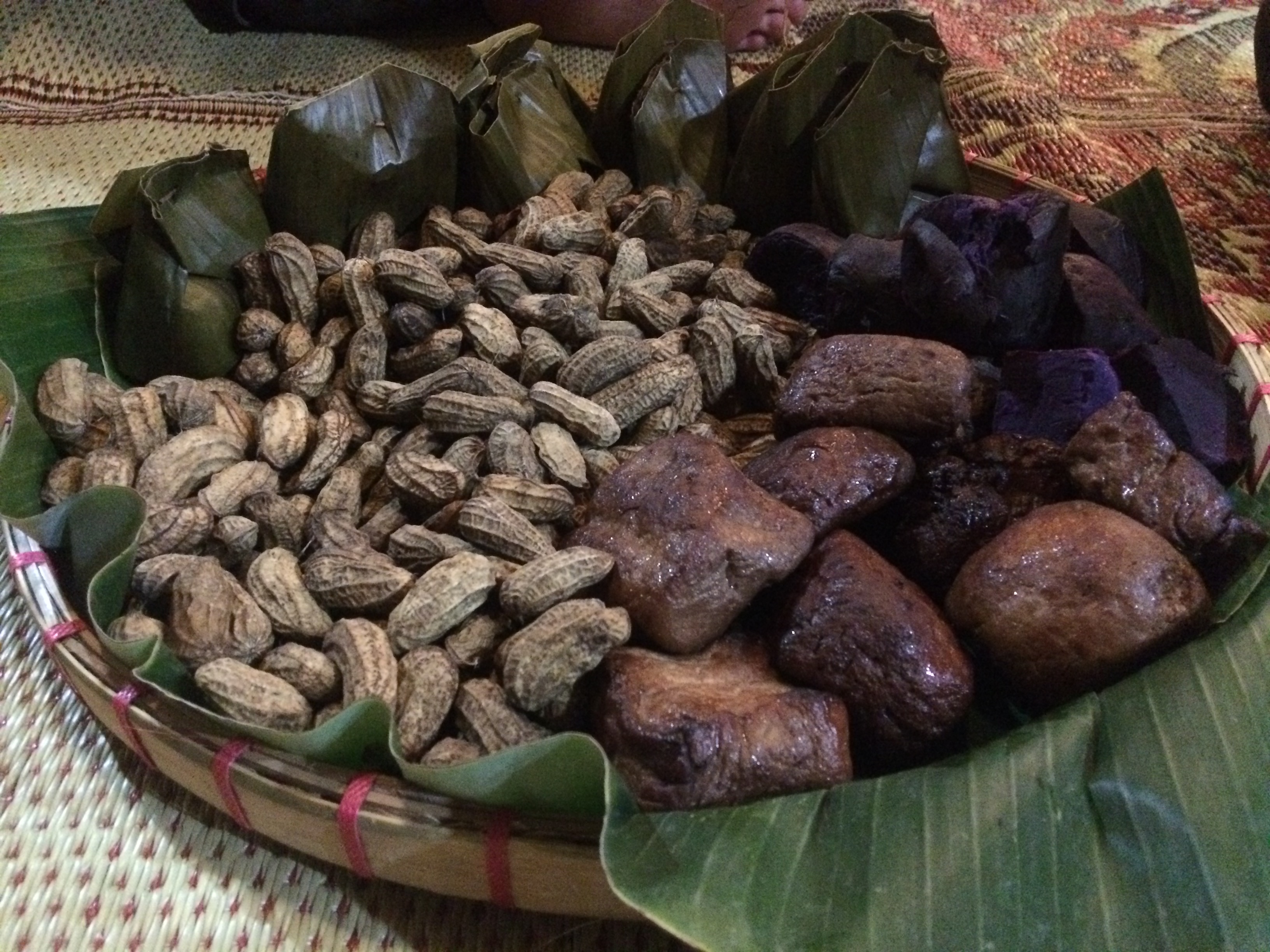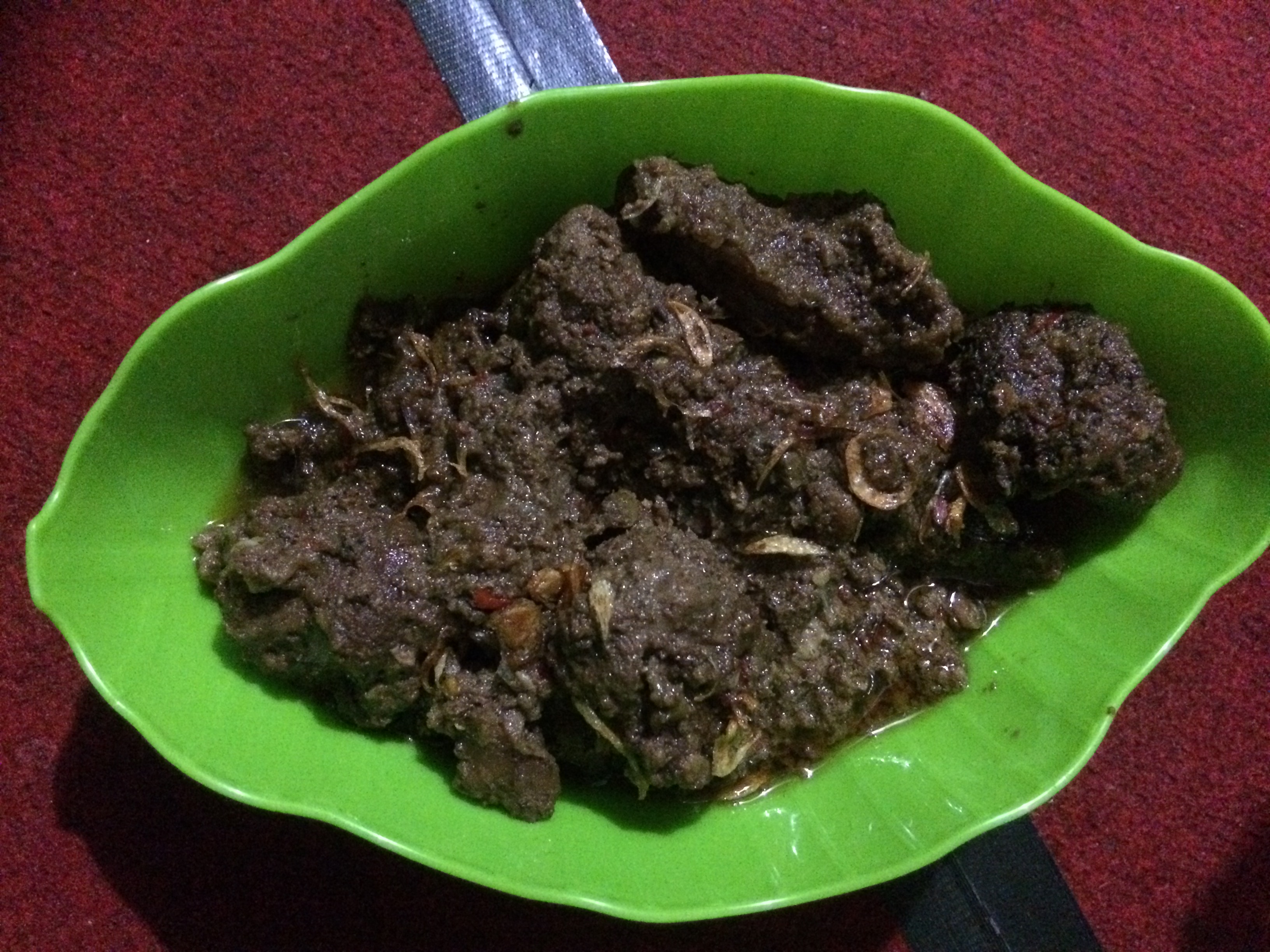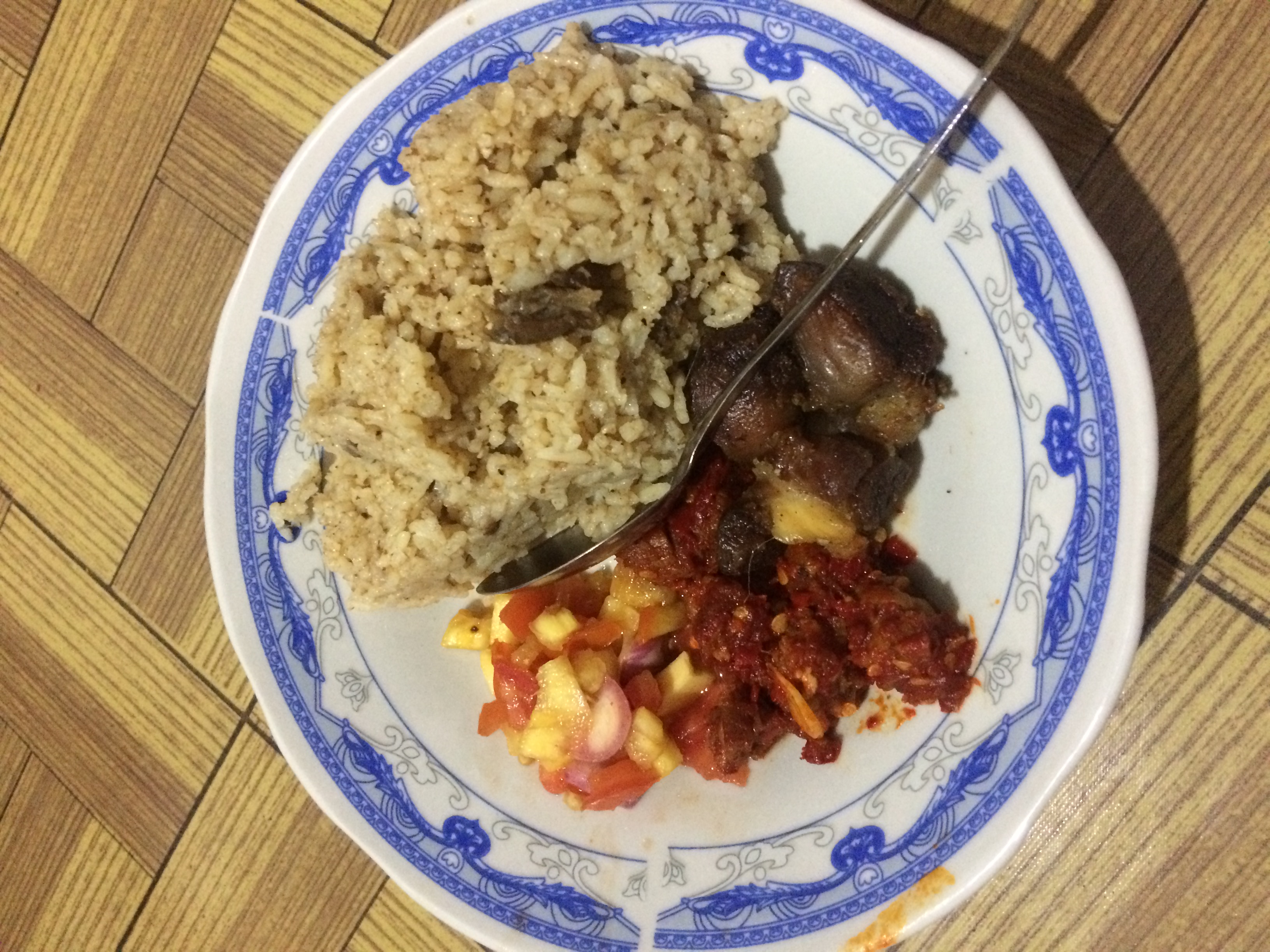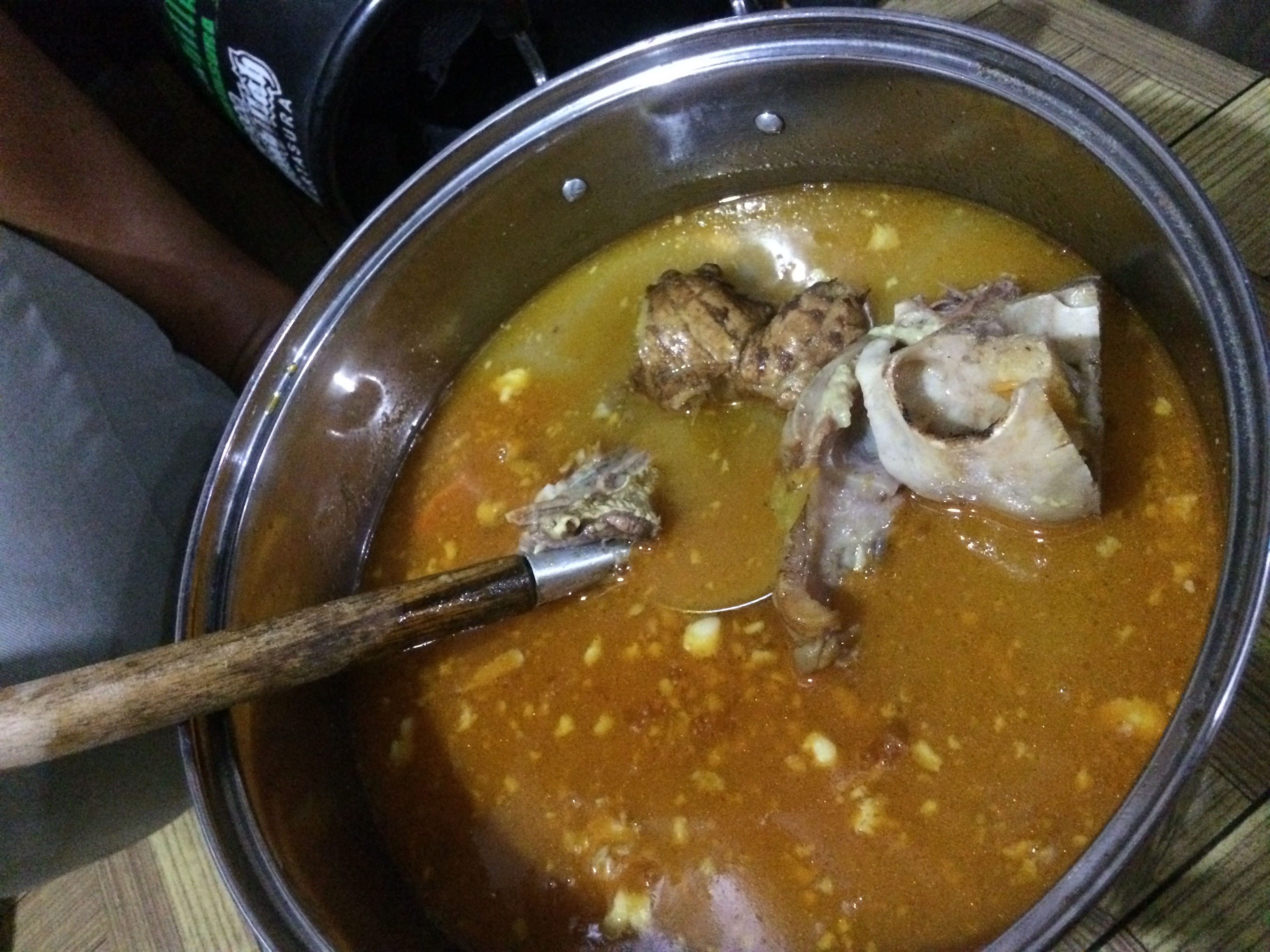OMW To Jogja
03 Sep 2017
Reading time ~8 minutes
I’m so happy to be y’all with this post, because at long last I am finally kissing Solo goodbye…and immediately on my way to an adjacent city in Central Java. Indeed, Solo’s rival court city of Jogjakarta is next on my travel itinerary. No matter how hard I try, I can’t seem to break free from the intense graviational pole that is Javanese culture. But first, updates on my final week (sniff, sniff…) in lovely Solo
Professor Yoyo, Leader of MTA In The Hotseat
The first priority (prerogative???) on my Watson to-do list of the week was to infiltra–erhm–attend a religious study session at the Majelis Tafsir Al-Quran (MTA) open to the public at the MTA headquarters in Solo. These sessions last roughly 4 hours (8:00-12:00) and are usually attended by thousands of people who sit on one of the floor, cross-legged on one of the five stories of the MTA headquarters building. The congregants sit (and some sleep…) patiently while religious leaders deliver lessons, lead discussions, and answer the audience’s questions on Islamic matters. This activity happens live on only one of the floors of the building, while the congregants on the rest of the floors are fed a live feed of the action.
I attended this mass religious study session with the primary intention of getting to do an interview with one of the MTA leaders in Solo, Pak Yoyo, a professor of English Literature at Universitas Sebeles Maret (CHECK SPELLING). Unfortunately, Professor Yoyo never showed at the study session this week. Thankfully, I was able to retrieve his contact information from a random English speaker at the event. I met up with Professor Yoyo the next day at his office at the language department of UNS. I was mostly intent on getting Professor Yoyo’s and MTA’s greater opinion on the permissibility of music making in Islam, because I was primed by a couple of informants of mine that they were relatively strict in that regard. Turns out MTA sponsors its own Islamic kroncong and karawitan groups, among several other arts acts including live dance. This initially came to me as a surprise, because I was expecting Professor Yoyo to denounce music-making at large. Here’s where things get juicily convoluted, though. MTA does not approve of the predominant forms of Islamic music making in Solo such as the musical genres spearheaded by the “traditionalist”, “Sufi-oriented”, or Nahdlatul Ulama (NU) leaning groups in Solo such as dhikr, sholawatan, nasyid, etc. In other words, they disapprove of most forms of traditional religious music making, while they are perfectly fine with most appropriations of secular genre contexts. Similarly, the people on the “traditionalist” or Sufi-oriented side of the spectrum (apparently, “traditionalist” refers to the opposite of the typical connotation of the word in Western jargon) generally stay clear of secular music making. The forces at work behind such apparently inexplicable dynamics is much too much beyond the scope of this meagre blog post…
O Balu!: Contemporary Dance Based on Rebana Jawa
After my brief meeting with Professor Yoyo, I attended one of the freshest acts at one of the freshest venues I’ve been to as of late. The event was held at the Taman Budayah Jawa Tengah (Central Java Cultural Park) and was on the shorter side given the Javanese bentfor all-nighter shows such as that of wayang kulit. It featured two contemporary dance pieces by two separate groups: a trio of women followed by a quartet of men. I was fortunate enough to get in touch with the the choreographer, music composer, and director of the quartet of men, Panji Pramayana, through a digital introduction through a mutual friend just a week prior to the performance. The piece Panji performed tonight, his newest work, is entitled ‘O Balu.’ ‘O Balu’ is actually a traditional Javanese story/literary work unto itself which has been historically told through the musical medium of Rebana Jawa, an Islamic musical form utilizing for main types of drums and voices. Being exposed to rebana jawa for the first time through Panji, I was immediately reminded of the santi swara sounds that Pak Waluyo regularly rehearses with his group.
Sendratari At Prambanan
So my trip to Jogjakarta (aka. Jogja) this weekend was premeditated by a brief redezvous to the royal town to check out a performance of Sendratari at the well-esteemed Candi Prambanan outdoor venue. After the creakiest bus ride of my life replete with nonsequitur musical selections and stops at non-descript locations, we (my friend Denok and new friends from Brazil, Japan, and Canada) arrive at the temple complex. With the main three of structures of the Candi Prambanan complex forming a stately backdrop to the center stage, the secenery at this venue is, in my opinion, to die for or at the very least worth paying the minimum 125.000 (~10 USD) IRP entrance fee to witness. Within 2 jam-packed hours composed of an archery contest, a kidnapping, and innumerable bouts of private duels and full-fledged warfare, the four of us foreigners and one non-foreign friends witnessed the acting out of the Ramayana in all of its abridged splendor. The first half of the performance ended with an epic lighting on fire to two gargantuan wooden structures on either side of the center-rear staircase of the main stage in tandem with the dramatic raising and falling of a gargantuan sculpture of (INSERT NAME OF DEITY HERE). When I say that this moment of the evening was epic, I mean it was truly EPIC. The second half was, oddly enough, significantly shorter than the first, yet certainly not wanting in energy and wonder. The Jogjanese style of gamelan playing which accompanied the dancing and acting throughout the evening contrasted the timbre and style of the Solonese karawitan sounds that I’ve grown accustomed to over the past three weeks. This marked disparity between the musical styles, instrumentations, performances practice, etc. of the gamelan music of the two royal cities (namely Jogjakarta and Surakarta/Solo) despite both cities being stably in Central Java is indicative of the amazing musical diversity that Indonesia at large has to offer to its citizens, let alone willing and able citizens of the world.
Women’s Sholawatan Event at Joglo Loji Gandrung
It just so happens that I extended my stay in Solo for an additional 1.5 weeks solely for the sake of attending an event featuring a couple of women’s sholawatan groups playing for an audience of female worshippers - not the most common sight to be found in Indonesia, or in the world for that matter. The event took place at the main pendopo attached to the mayor of Solo’s own residence (Joglo Loji Gandrung). Indeed, the event was entirely funded by municipal funds. In thinking through why the mayor might be invested in presenting women in Islam making religious music, I learned that Solo is known by religious music circles as the music of Sholawatan. The music at the event was not only entirely created by women, but the audience members were almost exclusively female. Indeed, this was the first event that I had attended in Indonesia in which women musicians were on stage and women listeners/worshipers were not tucked away to the rear or adjoining section of an event space. Very awesome.
Tasty Treats in Solo, Indonesia Pt. 5
It’s Eid-ul-Adha season folks! It’s been fun to hear about people’s plans to head back to their home towns to celelbrate the Muslim holiday with extended family or simply celebrate with their family in Solo. I’d been secretly hoping to be invited to a private Eid-Ul-Adha celebration all of last week. God answered my prayers with two separate invitations to qurbani following by filial festivities in Semarang and (INSERT CITY NAME). As a former vegan (like very, very recently former…like right before I left the United States), I really don’t know how to feel about a cow or goat sacrifice in the name of Allah at this point. The last time I had done the deed in God’s name was roughly 10 years prior in Southern California with my own extended family there. I finally decided to decline the invitations and skip out on all the fun. Here is the compilation of foods from this psat week past week I was able to enjoy despite missing out on Eid-Ul-Adha this year.
